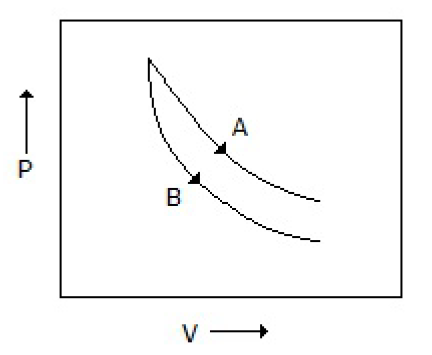Compressibility factor (i.e., the ratio of actual volume of gas to the volume predicted by ideal gas law) for all gases are
Always greater than one
Same at the same reduced temperature
Same at the same reduced pressure
Both (B) & (C)
Correct Answer :
D. Both (B) & (C)
Related Questions
The root mean square speed of molecules of a gas is equal to (where, m = mass of the molecule K = Boltzmanns constant, T = absolute temperature)
√(2KT/m)
√(3KT/m)
√(6KT/m)
3KT/m
Compressibility factor for almost all the gases are approximately same at the same
Pressure and temperature
Reduced pressure and reduced temperature
Critical pressure and critical temperature
None of these
Pick out the wrong statement.
The conversion for a gas phase reaction increases with decrease in pressure, if there is an increase in volume accompanying the reaction
With increase in temperature, the equilibrium constant increases for an exothermic reaction
The equilibrium constant of a reaction depends upon temperature only
The conversion for a gas phase reaction increases with increase in pressure, if there is a decrease in volume accompanying the reaction
When a gas is expanded from high pressure region to low pressure region; temperature change occurs. This phenomenon is related to the
Gibbs-Duhem equation
Gibbs-Helmholtz equation
Third law of thermodynamics
Joule-Thomson effect
Heat of reaction at constant volume is identified with __________ change.
Enthalpy
Internal energy
Either (A) or (B)
Neither (A) nor (B)
Joule-Thomson experiment is
Isobaric
Adiabatic
Isenthalpic
Both (B) & (C)
A system undergoes a change from a given initial state to a given final state either by an irreversible process or by a reversible process, then (where, Δ S1 and Δ SR are the entropy changes of the system for the irreversible and reversible processes respectively)
Δ S1 is always < Δ SR
Δ S1 is sometimes > Δ SR
Δ S1 is always > Δ SR
Δ S1 is always = Δ SR
The value of Cp & Cv respectively for monatomic gases in Kcal/kg Mole.°K are
5 & 3
3.987 & 1.987
1.987 & 0.66
0.66 & 1.987
In a reversible chemical reaction (where, Δx = number of moles of products-number of moles of reactants)
Addition of inert gas favours the forward reaction, when Δx is positive
Pressure has no effect on equilibrium, when Δn = 0
Addition of inert gas has no effect on the equilibrium constant at constant volume for any value of Δx (+ ve, - ve) or zero)
All 'a', 'b' & 'c'
Pick out the wrong statement.
A refrigeration cycle violates the second law of thermodynamics
Refrigeration cycle is normally represented by a temperature vs. entropy plot
In a refrigerator, work required decreases as the temperature of the refrigerator and the temperature at which heat is rejected increases
One ton of refrigeration is equivalent to the rate of heat absorption equal to 3.53 kW
__________ law of thermodynamics ascertains the direction of a particular spontaneous process.
Zeroth
First
Second
Third
Solubility of a substance which dissolves with an increase in volume and liberation of heat will be favoured by the
Low pressure and high temperature
Low pressure and low temperature
High pressure and low temperature
High pressure and high temperature
Sublimation temperature of dry ice (solid CO2) is __________ °C.
-273
0
-78
5
In a working refrigerator, the value of COP is always
0
< 0
< 1
> 1
The internal energy of an ideal gas is a function of its __________ only.
Molecular size
Volume
Pressure
Temperature
Gibbs free energy of a pure fluid approaches __________ as the pressure tends to zero at constant temperature.
Infinity
Minus infinity
Zero
None of these
Consider the process A & B shown in the figure given below: In this case, it is possible that

Both the processes are adiabatic
Both the processes are isothermal
Process A is isothermal while B is adiabatic
Process A is adiabatic while B is isothermal
In any spontaneous process,
Only F decreases
Only A decreases
Both F and A decreases
Both F and A increase
Pick out the correct statement.
Entropy and enthalpy are path functions
In a closed system, the energy can be exchanged with the surrounding, while matter cannot be exchanged
All the natural processes are reversible in nature
Work is a state function
A refrigerator works on the principle of __________ law of thermodynamics.
Zeroth
First
Second
Third
(∂H/∂T)P is the mathematical expression for
CV
Entropy change
Gibbs free energy
None of these
If different processes are used to bring about the same chemical reaction, the enthalpy change is same for all of them. This is __________ law.
Hess's
Kirchoff's
Lavoisier and Laplace
None of these
1st law of thermodynamics is nothing but the law of conservation of
Momentum
Mass
Energy
None of these
A gas shows deviation from ideal behaviour at
Low pressure and high temperature
Low pressure and low temperature
Low temperature and high pressure
High temperature and high pressure
Compressibility factor-reduced pressure plot on reduced co-ordinates facilitates
Use of only one graph for all gases
Covering of wide range
Easier plotting
More accurate plotting
Which of the following is not a unit of the equilibrium constant Kp? (where, Δx = number of moles of products number of moles of reactants)
(atm)Δx, when Δx is negative
(atm)Δx, when Δx is positive
Dimensionless, when Δx = 0
(atm)Δx2, when Δx > 0
Which of the following is not a reversible process?
Expansion of an ideal gas against constant pressure
Atmospheric pressure vaporisation of water at 100°C
Solution of NaCl in water at 50°C
None of these
Entropy change of the reaction, H2O (liquid) → H2O (gas), is termed as the enthalpy of
Solution
Vaporisation
Formation
Sublimation
The number of degrees of freedom at the triple point of water is
0
1
2
3
All gases above its inversion temperature, in a throttling process will show
A heating effect
No change in temperature
A cooling effect
Either (A) or (C)
